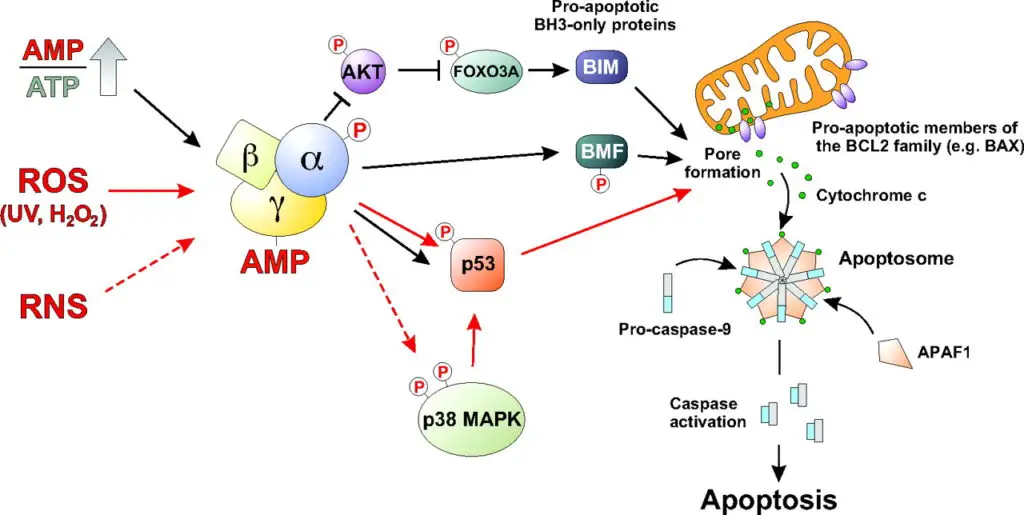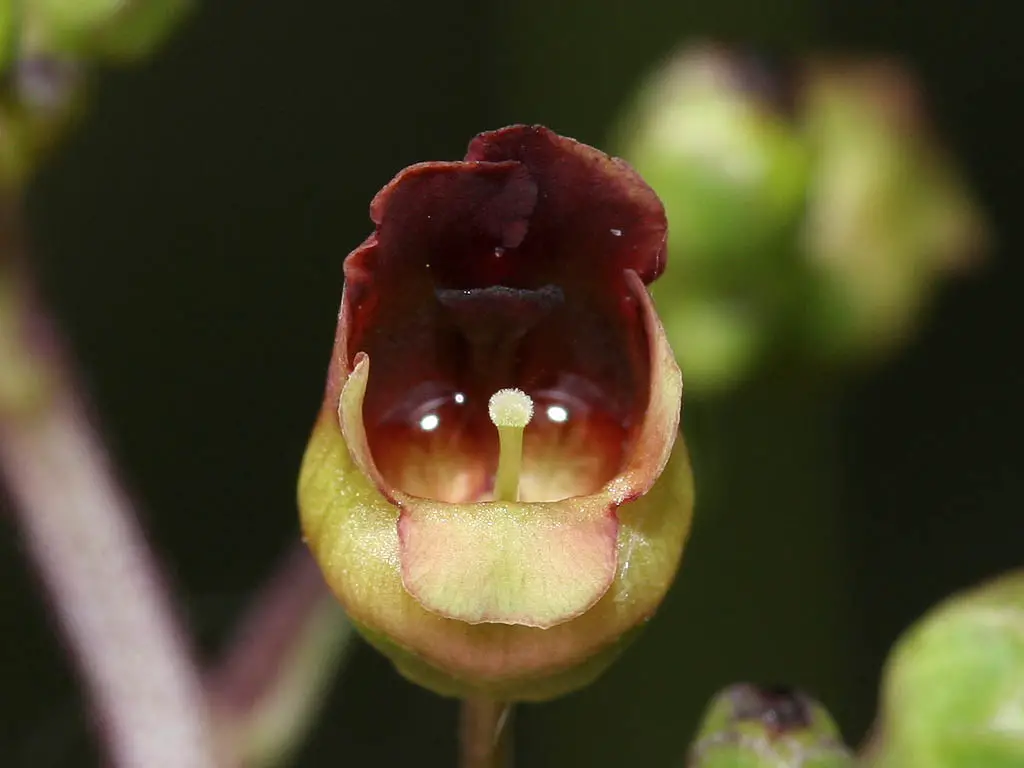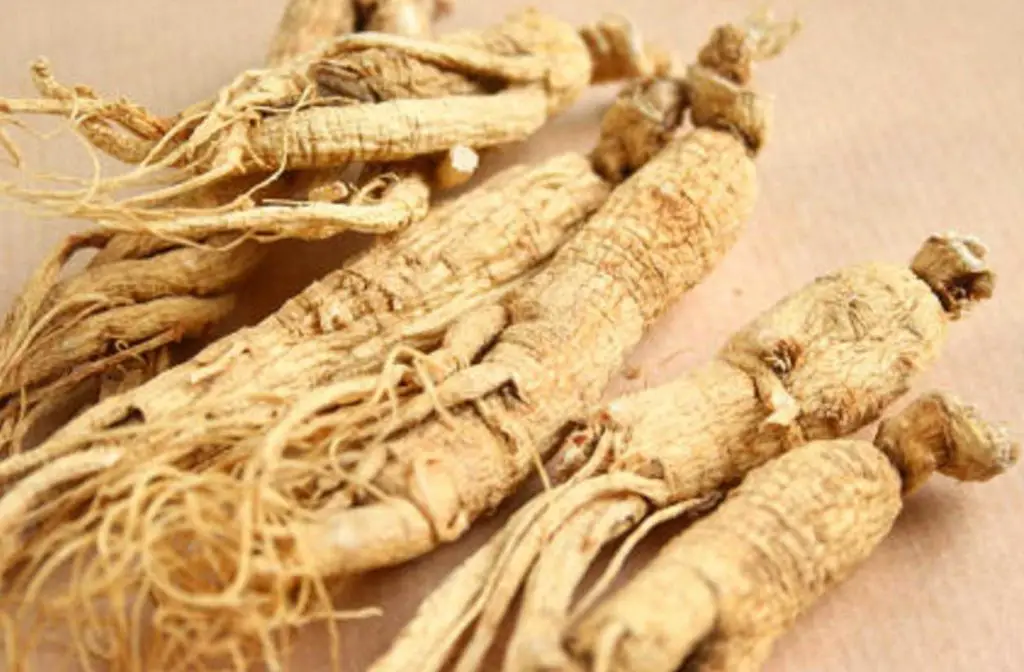What is AMPK?
AMPK is an ancient biological mechanism that has been maintained over evolutionary history. It is used by single-celled organisms like yeast, and by complex multicellular life forms like humans. AMPK (AMP-activated protein kinase) in an enzyme involved in cellular energy homeostasis.
Let’s break that down:
- The “A/AMP” in AMPK stands for adenosine monophosphate. AMP is an important source of energy which fuels everyday cellular functions. AMP is produced as ATP and ADP break down during the course of these everyday cellular functions.
- An enzyme is a substance that is a catalyst – it initiates a specific biochemical process in the body.
- Cellular energy homeostasis is a balance between ATP production and ATP consumption. As fuel is used by the cells, more energy needs to be produced to replace what was lost (or it needs to be conserved elsewhere) so that functioning is not interrupted.
AMPK is the master regulator that maintains cellular energy homeostasis, which is the foundation of our bodies’ functionality. In mammals, AMPK regulates the balance of energy at both the whole-body level (via response to hormones and the hypothalamus) and on the cellular level (by sensing AMP/ATP and ADP/ATP ratio levels).
ATP is the most important energy molecule in the body – its essentially the starting point of cellular function. As energy is used by cells, ATP breaks down into ADP (which has less energy potential); ADP then breaks down into AMP (which has the least energy potential of all three). This is where AMPK comes in – it senses the relative ratios of AMP/ADP/ATP, and tells the body if more ADP is needed so that proper functioning can continue.
You can see in this simplified explanation how important AMPK is for function. As we will see below, it also explains why dysregulation of AMPK is implicated in chronic, debilitating diseases, such as cancer, chronic inflammation, and diabetes.
AMPK Benefits and Uses
AMPK acts on many processes, via various mechanisms. This makes sense since it is the “master regulator” of our cells’ functioning. The effect of AMPK activation in the body depends on a very complex balance of factors and signaling pathways. Even so, there are some generally accepted benefits/outcomes of increased AMPK activation:
Anti-aging
As we age, AMPK activation declines. Some scientists think that AMPK is the factor in aging. It promotes cellular renewal and the production of new mitochondria.
Anti-inflammation
Interestingly, AMPK activation decreases inflammation, and can also be decreased by inflammation
Anti-diabetic
AMPK is becoming very well understood in terms of its role in diabetes treatment, namely by its ability to improve insulin sensitivity (see below).
Cancer Prevention
Weight control/loss
AMPK is involved either directly or tangentially in signaling hunger and satiety, and also in prompting cells to use stored energy (fat) instead of producing and storing new energy (as in fat cell formation).
Cardio-protection
AMPK activation helps to lower lipid levels, relaxes the arteries to increase blood flow and lower blood pressure, and protects against atherosclerosis (hardening and narrowing of the arteries)
List of AMPK Activators
There are many herbal constituents/products and nutritional products which have been shown to activate the AMPK-pathway; you can find an expanded listing here. Some notable AMPK activators:
AICAR
AICAR is an analog of AMP, which is involved in cellular energy storage and use like ATP. Because it is an analog of AMP, AICAR can directly stimulate AMPK activity which in turn can improve muscle performance. AICAR is banned by the World Anti-Doping Agency because of its role as a performance enhancer.
ALA (alpha Lipoic acid)
ALA is a powerful antioxidant and AMPK activator. It has been shown to increase insulin sensitivity and has anti-obesity effects. A list of our favorite ALA.
Burdock (Arctium lappa)
The compound arctigenin was isolated from Burdock. It was shown that via AMPK activation, arctigenin lowered glucose and improved lipid metabolism in mice. A list of our favorite Burdock.
Green tea extract (Camellia sinensis)
Green tea extract was shown to activate AMPK by activating it’s upstream kinase, LKB1, which in turn is implicated in cancerous tumor suppression. A list of our favorite Green Tea Extract.
Berberine (Coptis chinensis)
Due to its AMPK activation, berberine has been shown to have similar anti-diabetic/hypoglycemic effects as Metformin. Berberine is an effective treatment for women with polycystic ovarian syndrome (PCOS). Also, like Metformin, berberine can reduce the weight gain which is a side effect of many antipsychotic medications. A list of our favorite Berberine.
Cordyceps Militaris
Cordyceps, isolated from the C. militaris mycelium, is possibly converted to an AMP analog, which in turn activates AMPK. Know more about Cordyceps here.
Dihydromyricetin
Dihydromyricetin (also known as DHM or Hovenia Dulcis) is a flavonoid that has shown to activate AMPK. It is not yet known how it activates AMPK but researchers are confident that many of it’s benefits are due to its AMPK activation. DHM is best known as a hangover cure but is also used to treat alcohol withdrawal, tumors, anxiety, and hair loss. Our favorite Dihydromyricetin.
Read Also: Does DHM Benefit Anxiety & Hangovers?
Turmeric (Curcuma longa)
A study in rats showed that an alcohol extract of turmeric suppressed body weight gain, reduced white adipose tissue, reduced triglycerides, and reduced cholesterol. This was attributed to several mechanisms, one being AMPK activation. A list of our favorite Turmeric.
Goat’s rue (Galega officinalis)
Goat’s rue is the source plant for the aforementioned antidiabetic pharmaceutical Metformin. Interestingly, the plant is considered an invasive weed in 35 U.S. states, and is poisonous to grazing livestock. A list of our favorite Goat’s Rue.
Jiaogulan (Gynostemma pentaphyllum)
Sometimes called “cheap ginseng”, G. pentaphyllum was sometimes used as a cheap substitute for Panax ginseng and it is shown to be an AMPK activator. Because it contains the ginsenosides like Panax ginseng, it has similar effects as P. ginseng. However, G. pentaphyllum may have more of an anti-diabetic effect due to the unique content of gypenosides.
Read Also: Jiaogulan Plant (Gynostemma): Does This Tea Live Up To The Benefits?
Nootkatone
Present in grapefruit peels, Nootkatone has a strong AMPK-activating action in muscle cells, which in turn promotes glucose and lipid metabolism. In vivo administration of Nootkatone demonstrated endurance-enhancing and anti-fatigue effects, as well as reduction of body weight, triglycerides, cholesterol, and body fat accumulation levels. A list of our favorite Nootkatone.
Panax ginseng
Ginseng has long been known to improve diabetes and metabolic syndrome. P. ginseng has been shown to increase glucose uptake, decrease liver triglycerides and cholesterol levels, inhibit lipogenesis (fat production) and inhibit liver glucose production. Know more about Panax Ginseng here.
Quercetin
Quercetin is the most abundant flavonoid, found in many fruits, vegetables, and grains. It is shown to have a protective role against multiple diseases associated with oxidative stress (the inability of the body to neutralize free radicals). Via its activation of the AMPK signaling pathway, quercetin shows anti-adipogenesis (fat-forming) activity. Via other mechanisms, quercetin was also shown to induce apoptosis (cell death) of mature fat cells. A list of our favorite Quercetin.
Resveratrol and GSE (grape seed extract)
In studies testing efficacy against oral cancer, it was shown that Resveratrol and GSE could prevent oral cancer through modulation of the AMPK pathway, thereby inhibiting cell proliferation and inducing cell death and autophagy. Activation of AMPK by Resveratrol has also been shown to lower blood pressure. A list of our favorite Resveratrol.
Acetyl salicylate (extracted from willow bark, Salix alba)
Acetyl salicylate (a.k.a. good old aspirin) is a synthetic derivative of salicylate. When aspirin is taken orally, it is broken down into salicylate, which in turn activates AMPK. A list of our favorite Acetyl.
Artemisinin (Artemisia annua)
Not only has Artemisinin shown to be anti-cancer in various studies at a molecular level it has demonstrated activation of AMPK using mTOR signaling. A list of our favorite Artemisinin.
Fucoidan (Brown Seaweed)
Fucoidan induces AMPK activation by regulation of Cyclin D1, CDK4 and CDK6. Know more about Fucoidan – Japan’s Kept Secret here.
Reishi (Gandoerma Lucidum)
Reishi activates AMPK and stimulates glucose uptake, in levels that are comparable to insulin activity. Know more about the Reishi mushroom here.
Read Also: Does Reishi Mushroom coffee really work?
Rhodiola Rosea
Rhodiola rosea combined with salidroside resulted in an increase in AMPK, it’s not sure if Rhodiola Rosea alone will result in an increase in AMPK but it’s possible. A list of our favorite Rhodiola.
Ursolic Acid
AMPK is activated by Ursolic Acid because it encourages ceramide producton. Ceramide in turn activates AMPK. A list of our favorite Ursolic Acid.
AMPK Signaling Pathway – What AMPK Does to Balance Energy
AMPK is activated by stressors that deplete cellular energy, including stressors that inhibit ATP production (i.e., hypoxia, hypoglycemia, or mitochondrial poisons), and any factors that speed up ATP consumption (like muscle contractions during exercise).
Once activated, AMPK both promotes ATP (energy) production, and conserves ATP use.
- AMPK promotes ATP production by increasing the expression/activity of proteins involved in catabolism (the breakdown of complex molecules for use in cellular respiration, which in turn creates ATP)
- AMPK conserves ATP use by switching off biosynthetic pathways (anabolic reactions that use ATP to create new complex molecules out of simpler ones)
AMPK can be activated in different parts of the body, for example the brain (hypothalamus), the liver, adipose tissue, and in muscle tissue. Activation in different areas has differing effects.

Role of AMPK in Normal Body Processes
AMPK in the hypothalamus is recognized as a nutrient and glucose sensor in the central nervous system. It is a key sensor of whole body energy status, and it regulates appetite and fuel availability.
AMPK effects on Muscle and Exercise
Exercise is likely the most powerful physiological activator of AMPK. AMPK promotes glucose uptake into the skeletal muscle during exercise or muscle contraction. Activation of muscle AMPK during exercise, results in glucose uptake. This explains why exercise is beneficial for people with type 2 diabetes. This also points to the reason why activation of AMPK via medication would be an effective treatment for patients with type 2 diabetes. The beneficial effects of exercise, and by contrast, the deleterious effects of sedentary lifestyles are likely related to the activation or lack of activation of AMPK, respectively. The activation of AMPK during exercise is intensity-dependent. However, increased AMPK activation is also observed at lower-intensity exercise that is very prolonged.
AMPK and Chronic Disease
Since AMPK regulates so many diverse physiologic and metabolic processes, the dysregulation of AMPK has been strongly implicated in chronic illnesses including cancer, diabetes, inflammation, and obesity. AMPK is inhibited by high-fat diets and chronic hyperglycemia, precursors to diabetes and metabolic syndrome.
AMPK and Cancer
Regular exercise has been demonstrated to have potential protective action against some forms of cancer (breast, uterus, colon and prostate), and the activation of AMPK by exercise may be a reason.
Under normal functioning, AMPK activation inhibits biosynthetic pathways and inhibits cell growth and division – runaway cell division of faulty cells is what causes cancerous tumors. The human tumor suppressor gene LKB1 directly activates AMPK, and in turn cell carcinogenesis is controlled. Some cancerous tumor cells lack this LKB1-AMPK pathway (or are otherwise able to down-regulate AMPK), which is thought to be partially responsible for tumor formation in the first place. For example, the majority of breast cancer cases appear to have defects in AMPK activation.
The use of the diabetes drug Metformin (described below) in patients with type-2 diabetes has been associated with a 30-35% lower incidence of cancer when compared to diabetics on other medications. Though the responsible mechanism is currently being debated, Metformin’s demonstrated AMPK activation is thought to be the primary driver for its cancer protective effects.
On the other hand, the ability of AMPK to promote energy uptake by cells means that cancerous tumors could potentially benefit from this increased energy availability. Therefore, with current scientific understanding, it is generally thought that AMPK activation is more helpful in cancer prevention, rather than in cancer treatment.
AMPK and Diabetes
Type 2 Diabetes is a metabolic disorder characterized by insulin resistance, high blood sugar, and relative lack of insulin. Diabetes is essentially a disorder of energy dysregulation. AMPK activation reverses elevated storage of triglycerides and deficits in mitochondrial function, which are both associated with insulin resistance seen in diabetes.
Metformin (Glucophage): First introduced in the 1950s, it is considered the first-line pharmaceutical treatment for type-2 diabetes. Metformin (and phenformin, withdrawn in the 1970s due to severe side effects) is a synthetic derivative (a biguanide) of guanidine, a constituent found in the plant Galega officinalis (a.k.a. goat’s rue, French lilac, Italian fitch). Although it was known that metformin enhanced insulin sensitivity and reduced glucose production in the liver, it was not understood how this worked on a molecular level until 2001 when the AMPK-activation link was definitively demonstrated. Although the AMPK pathway is not the only means by which the drug has therapeutic effects, it indicates the potential for this pathway as a drug development target.
Obviously, if you don’t suffer from diabetes you will not have access to this prescription AMPK-activating drug, so you will need to find alternatives. There are many possible choices for natural or synthetic over-the-counter alternatives.
Side Effects of AMPK Activators
Again, since AMPK is activated in the body by complex, diverse, yet interrelated mechanisms, it is difficult to make a broad generalization about possible side effects of AMPK-activating supplements. It is recommended that you look at the side effect profile of each supplement to determine any potential negative effects. For example, aspirin is shown to be AMPK-activating, but it can also substantially increase bleeding and bruising. Quercetin can cause headache and upset stomach. These variations indicate the importance of treating any supplement as having a unique effect, so checking labels and reputable information sources is important.
AMPK Drugs (Pharmacological) vs AMPK Supplements
Besides approved pharmaceuticals like Metformin, there are several research chemicals out there that directly activate AMPK, but most are not approved for use or are not available to the public. The AMPK pathway is not presently well-understood by science, and there are more unknowns than knows. We do know that AMPK is critical to healthy biological function, so it’s probably best to stick with herbal or natural supplements that indirectly support and enhance this function, rather than trying to interfere with the process directly via indeterminate/unstudied means without qualified medical supervision. Since AMPK is just beginning to be understood by modern science, and because it is such a complex pathway, the ramifications of these more obscure direct activators are unknown.
Increasing AMPK without Supplementation
Exercise: Again, exercise is the major physiological activator of AMPK. Since exercise uses energy in the form of ATP, this stimulates the AMPK pathway to produce more ATP (to maintain cellular homeostasis).
Calorie Restriction: Fasting and other forms of calorie restriction have been shown to have beneficial effects against cancer, diabetes, and aging. Caloric restriction activates AMPK via multiple pathways. One such pathway is via the hunger hormone ghrelin, which when secreted in the stomach during calorie restriction, activates AMPK in the hypothalamus. Activation of AMPK via calorie restriction also increases insulin sensitization, which in turn keeps our blood sugar stable.
Exposure to Cold: After seven (7) days of cold exposure at 4⁰C, AMPK activity in mice was significantly elevated above control levels. AMPK activity increased after chronic cold exposure, and this was linked to non-shivering thermogenesis.
References:
http://www.ingentaconnect.com/content/govi/pharmaz/2014/00000069/00000006/art00014?crawler=true
https://www.spandidos-publications.com/ijo/46/5/2216
https://www.ncbi.nlm.nih.gov/pmc/articles/PMC3144985/
https://www.ncbi.nlm.nih.gov/pubmed/18586010
http://onlinelibrary.wiley.com/doi/10.1002/pdi.606/pdf
https://www.ncbi.nlm.nih.gov/pubmed/23244544
http://genesdev.cshlp.org/content/25/18/1895.full
http://diabetes.diabetesjournals.org/content/62/7/2164.full-text.pdf
http://www.cell.com/cancer-cell/fulltext/S1535-6108(13)00035-4https://www.ncbi.nlm.nih.gov/pmc/articles/PMC4724661/
https://www.ncbi.nlm.nih.gov/pubmed/22095235
https://www.ncbi.nlm.nih.gov/pmc/articles/PMC4731425/
https://www.ncbi.nlm.nih.gov/pmc/articles/PMC4855276/
https://www.ncbi.nlm.nih.gov/pmc/articles/PMC3249400/
http://www.naturalmedicinejournal.com/journal/2012-12/clinical-applications-berberinehttps://www.ncbi.nlm.nih.gov/pubmed/26114354
https://www.ncbi.nlm.nih.gov/pmc/articles/PMC3132561/
http://diabetes.diabetesjournals.org/content/61/4/933.full
http://cancerpreventionresearch.aacrjournals.org/content/7/9/927.long






Darcy-Get well soon! I loved your article! Very interesting!!!!!!!!
Thanks Anne, keep coming back for more articles!